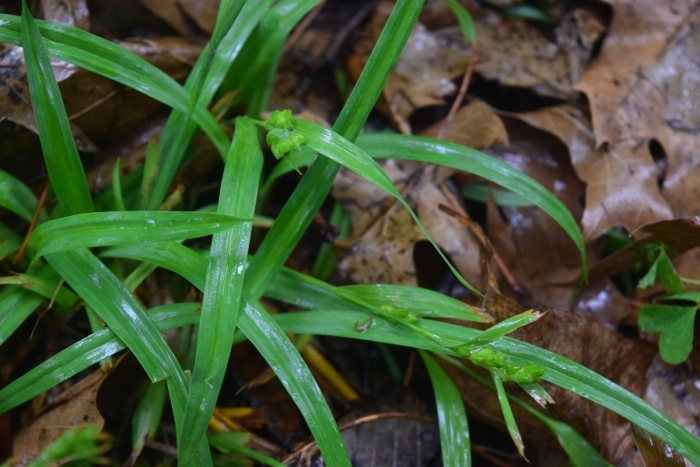Blue Sedge
(Carex glaucodea)
Blue Sedge (Carex glaucodea)
/
/

Daniel Atha
Public Domain
Image By:
Daniel Atha
Recorded By:
Copyright:
Public Domain
Copyright Notice:
Photo by: Daniel Atha | License Type: Public Domain | License URL: http://creativecommons.org/publicdomain/zero/1.0/ | Rights Holder: Daniel Atha | Publisher: iNaturalist | Date Created: 2016-06-08T16:04:52-07:00 |




































Estimated Native Range
Summary
Carex glaucodea, commonly known as Blue Sedge, is an evergreen perennial grass native to a variety of habitats including moist meadows, open woodlands, and along stream banks in the Eastern USA and Southeast Canada. It typically grows to a height of 0.5-0.8 feet (0.15-0.25 meters) and can spread up to 3 feet (0.9 meters) wide. Blue Sedge forms dense clumps of fine-textured, blue-green foliage that provides year-round interest in the garden. The plant produces inconspicuous brown flower spikes in late spring to early summer, which are not particularly showy but add to the plant’s naturalistic appeal.
Blue Sedge is valued for its low maintenance and its ability to thrive in a range of conditions, from full sun to part shade. It is an excellent choice for rain gardens, as a ground cover, or for stabilizing soil in erosion-prone areas. It is adaptable to various soil types, provided they have good drainage, and it can tolerate both medium and high water conditions. While generally disease-free, it can suffer from root rot in overly wet soils. Blue Sedge is not known for aggressive roots or significant pest problems. It is a versatile plant that can be used in mass plantings or as an accent in mixed borders.CC BY-SA 4.0
Blue Sedge is valued for its low maintenance and its ability to thrive in a range of conditions, from full sun to part shade. It is an excellent choice for rain gardens, as a ground cover, or for stabilizing soil in erosion-prone areas. It is adaptable to various soil types, provided they have good drainage, and it can tolerate both medium and high water conditions. While generally disease-free, it can suffer from root rot in overly wet soils. Blue Sedge is not known for aggressive roots or significant pest problems. It is a versatile plant that can be used in mass plantings or as an accent in mixed borders.CC BY-SA 4.0
Plant Description
- Plant Type: Grass
- Height: 0.5-0.8 feet
- Width: 2-3 feet
- Growth Rate: Moderate
- Flower Color: N/A
- Flowering Season: Spring
- Leaf Retention: Evergreen
Growth Requirements
- Sun: Part Shade, Full Sun
- Water: Medium, High
- Drainage: Medium, Fast
Common Uses
Bird Garden, Deer Resistant, Groundcover, Low Maintenance
Natural Habitat
native to a variety of habitats including moist meadows, open woodlands, and along stream banks in the Eastern USA and Southeast Canada
Other Names
Common Names: Flaccid Sedge, Glaucescent Sedge, Carex Bleuâtre
Scientific Names: , Carex glaucodea, Carex flaccosperma var. glaucodea,
GBIF Accepted Name: Carex glaucodea Tuck. ex Olney